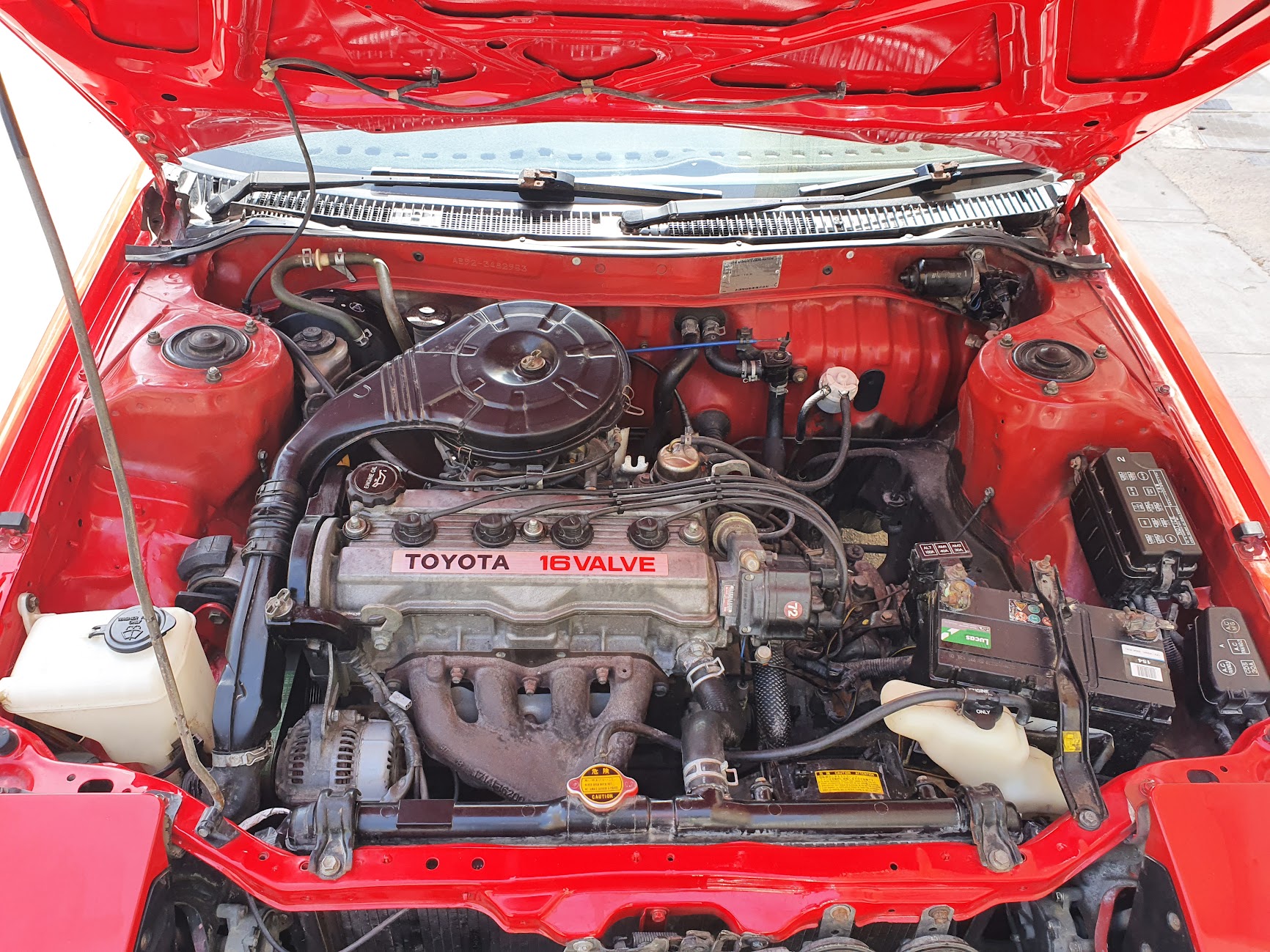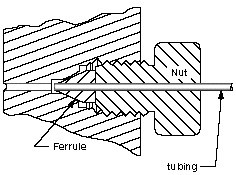|
T-VIS
Toyota Variable Induction System, or T-VIS, is a variable intake system designed by Toyota to improve the low-end performance of multi-valve engines. T-VIS is intended to improve the low-end torque of high-performance, four-stroke internal combustion engines - by changing the geometry of the intake manifold according to the engine rotation speed. The system uses two separate intake runners per cylinder, one being equipped with a butterfly valve that can either open or close the runner. All valves are attached to a common shaft which is rotated by a vacuum actuator outside the manifold. T-VIS does not actually keep one of the intake valves from opening or seal off the port for one valve.''Toyota Twin Cam'' p. 11 The engine control unit [...More Info...] [...Related Items...] OR: [Wikipedia] [Google] [Baidu] |
Toyota S Engine
The Toyota S Series engines are a family of Straight-four engine, straight-four petrol (or CNG) Internal combustion engine, engines with displacements between 1.8 and 2.2 litres, produced by Toyota Motor Corporation from January 1980 to August 2007. The S series has cast iron engine blocks and aluminium cylinder heads. This engine was designed around the new LASRE technology for lighter weight – such as sintered hollow camshafts. Table of S-block engines 1S The 1S is the first version of the S-series engine. It is a member of Toyota's ''Lasre'' engine family (''Lightweight Advanced Super Response Engine''). Bore and stroke are 80.5 x 90.0 mm. The engine was first seen in 1981, and was fitted to a wide range of Toyotas, in both RWD and FWD applications. 1S (1S-U) Original ''1S'' engine, designed for longitudinal engine, longitudinal, rear-wheel-drive applications. Designated ''1S-U'' with Japanese emissions controls. * Production: June 1981 — June 198 ... [...More Info...] [...Related Items...] OR: [Wikipedia] [Google] [Baidu] |
Toyota A Engine
The Toyota A Series engines are a family of inline-four internal combustion engines with displacement from 1.3 L to 1.8 L produced by Toyota Motor Corporation. The series has cast iron engine blocks and aluminum cylinder heads. To make the engine as short as possible, the cylinders are siamesed. The development of the series began in the late 1970s, when Toyota wanted to develop a completely new engine for the Toyota Tercel, the successor of Toyota's K engine. The goal was to achieve good fuel efficiency and performance as well as low emissions with a modern design. The A-series includes one of the first Japanese mass-production DOHC, four-valve-per-cylinder engines, the 4A-GE, and a later version of the same engine was one of the first production five-valve-per-cylinder engines. Toyota joint venture partner Tianjin FAW Xiali produces the 1.3 L 8A and resumed production of the 5A in 2007. 1A The 1.5 L 1A was produced between 1978 and ... [...More Info...] [...Related Items...] OR: [Wikipedia] [Google] [Baidu] |
Variable Intake
In internal combustion engines, a variable-length intake manifold (VLIM),variable intake manifold (VIM), or variable intake system (VIS) is an automobile internal combustion engine manifold technology. As the name implies, VLIM/VIM/VIS can vary the length of the intake tract in order to optimise power and torque across the range of engine speed operation, as well as to help provide better fuel efficiency. This effect is often achieved by having two separate intake ports, each controlled by a valve, that open two different manifolds – one with a short path that operates at full engine load, and another with a significantly longer path that operates at lower load. The first patent issued for a variable length intake manifold was published in 1958, US Patent US2835235 by Daimler Benz AG. There are two main effects of variable intake geometry: ;Swirl: Variable geometry can create a beneficial air swirl pattern, or turbulence in the combustion chamber. The swirling helps distribu ... [...More Info...] [...Related Items...] OR: [Wikipedia] [Google] [Baidu] |
Acoustic Control Induction System
''Acoustic Control Induction System'', or ACIS, is an implementation of a variable-length intake manifold system designed by Toyota. Simply put, the ACIS system uses a single intake air control valve located in the intake to vary the length of the intake tract in order to optimize power and torque, as well as provide better fuel efficiency and reduce intake "roar". The engine control unit (ECU) controls the position of one or more air control valves based on input signals from throttle angle and engine RPM. The vacuum switching valve (VSV) which controls the vacuum supply to the actuator is normally closed and passes vacuum to the actuator when it is energized by the ECU. By energizing the VSV vacuum is passed to the actuator, closing the air control valve. This effectively lengthens the intake manifold run. By de-energizing the VSV, vacuum to the actuator is blocked and trapped vacuum is bled off of the actuator diaphragm. Toyota ACIS is an On/Off system. The valve (or valves in ... [...More Info...] [...Related Items...] OR: [Wikipedia] [Google] [Baidu] |
Intake Manifold
An inlet manifold or intake manifold (in American English) is the part of an internal combustion engine that supplies the fuel/air mixture to the cylinder (engine), cylinders. The word ''manifold (engineering), manifold'' comes from the Old English word ''manigfeald'' (from the Anglo-Saxon ''manig'' [many] and ''feald'' [repeatedly]) and refers to the multiplying of one (pipe) into many.manifold, (adv.) "in the proportion of many to one, by many times". AD1526 ''Oxford English Dictionary'', In contrast, an exhaust manifold collects the exhaust gases from multiple cylinders into a smaller number of pipes – often down to one pipe. The primary function of the intake manifold is to ''evenly'' distribute the combustion mixture (or just air in a direct injection engine) to each intake port in the cylinder head(s). Even distribution is important to optimize the efficiency and performance of the engine. It may also serve as a mount for the carburetor, throttle body, fuel inje ... [...More Info...] [...Related Items...] OR: [Wikipedia] [Google] [Baidu] |
Toyota G Engine
The Toyota Motor Corporation is a Japanese Multinational corporation, multinational Automotive industry, automotive manufacturer headquartered in Toyota City, Aichi, Japan. It was founded by Kiichiro Toyoda and incorporated on August 28, 1937. Toyota is the List of manuf ... G-family engine is a family of straight-6 piston engines produced from 1979 to 2008. It is notable in that only a single displacement, , was produced in this series. Initially belt-driven OHC Interference_engine#Interference, non-interference engines (except the VVT-i version which is an interference engine), multivalve DOHC (except the 1G-EU SOHC 12 valve engine) and variable valve timing were added later during the production run. The 1G-GEU was Toyota's first mass produced four-valve twincam engine. A prototype version of the 1G-GEU called the LASREα–X, featuring twin-turbos, variable valve timing and intake as well as variable displacement, was fitted to the Toyota FX-1 show car at the 1983 To ... [...More Info...] [...Related Items...] OR: [Wikipedia] [Google] [Baidu] |
Solenoid Valve
A solenoid valve is an electromechanically operated valve. Solenoid valves differ in the characteristics of the electric current they use, the strength of the magnetic field they generate, the mechanism they use to regulate the fluid, and the type and characteristics of fluid they control. The mechanism varies from linear action, plunger-type actuators to pivoted-armature actuators and rocker actuators. The valve can use a two-port design to regulate a flow or use a three or more port design to switch flows between ports. Multiple solenoid valves can be placed together on a manifold. Solenoid valves are the most frequently used control elements in fluidics. Their tasks are to shut off, release, dose, distribute or mix fluids. They are found in many application areas. Solenoids offer fast and safe switching, high-reliability, long service life, good medium compatibility of the materials used, low control power and compact design. Operation There are many valve design varia ... [...More Info...] [...Related Items...] OR: [Wikipedia] [Google] [Baidu] |
Cross Section (geometry)
In geometry and science, a cross section is the non-empty intersection (set theory), intersection of a solid body in three-dimensional space with a Plane (geometry), plane, or the analog in higher-dimensional spaces. Cutting an object into slices creates many parallel cross-sections. The boundary of a cross-section in three-dimensional space that is parallel to two of the Cartesian coordinate system, axes, that is, parallel to the plane determined by these axes, is sometimes referred to as a contour line; for example, if a plane cuts through mountains of a raised-relief map parallel to the ground, the result is a contour line in two-dimensional space showing points on the surface of the mountains of equal elevation. In technical drawing a cross-section, being a Planar projection, projection of an object onto a plane that intersects it, is a common tool used to depict the internal arrangement of a 3-dimensional object in two dimensions. It is traditionally crosshatched with th ... [...More Info...] [...Related Items...] OR: [Wikipedia] [Google] [Baidu] |
Actuator
An actuator is a machine element, component of a machine that produces force, torque, or Displacement (geometry), displacement, when an electrical, Pneumatics, pneumatic or Hydraulic fluid, hydraulic input is supplied to it in a system (called an actuating system). The effect is usually produced in a controlled way. An actuator translates such an input signal into the required form of mechanical energy. It is a type of transducer. In simple terms, it is a "mover". An actuator requires a control device (which provides control signal) and a source of energy. The control signal is relatively low in energy and may be voltage, electric current, Compressed air, pneumatic, or hydraulic fluid pressure, or even human power. In the electric, hydraulic, and pneumatic sense, it is a form of automation, automation or automatic control. The displacement achieved is commonly linear or rotational, as exemplified by linear motors and rotary motors, respectively. Rotary motion is more natural for s ... [...More Info...] [...Related Items...] OR: [Wikipedia] [Google] [Baidu] |
Engine Control Unit
An engine control unit (ECU), also called an engine control module (ECM), is a device that controls various subsystems of an internal combustion engine. Systems commonly controlled by an ECU include the fuel injection and ignition systems. The earliest ECUs (used by aircraft engines in the late 1930s) were mechanical-hydraulic units; however, most 21st-century ECUs operate using digital electronics. Functions The main functions of the ECU are typically: * Fuel injection system * Ignition system * Idle speed control (typically either via an idle air control valve or the electronic throttle system) * Variable valve timing and/or variable valve lift systems The sensors used by the ECU include: * accelerator pedal position sensor * camshaft position sensor * coolant temperature sensor * crankshaft position sensor * knock sensors * inlet manifold pressure sensor ( MAP sensor) * intake air temperature * intake air mass flow rate sensor ( MAF sensor) * oxygen (lambda) s ... [...More Info...] [...Related Items...] OR: [Wikipedia] [Google] [Baidu] |
Toyota
is a Japanese Multinational corporation, multinational Automotive industry, automotive manufacturer headquartered in Toyota City, Aichi, Japan. It was founded by Kiichiro Toyoda and incorporated on August 28, 1937. Toyota is the List of manufacturers by motor vehicle production, largest automobile manufacturer in the world, producing about 10 million vehicles per year. The company was founded as a spinoff of Toyota Industries, a machine maker started by Sakichi Toyoda, Kiichiro's father. Both companies are now part of the Toyota Group, one of the largest conglomerates in the world. While still a department of Toyota Industries, the company developed its first product, the Toyota Type A engine, Type A engine, in 1934 and its first passenger car in 1936, the Toyota AA. After World War II, Toyota benefited from Japan's alliance with the United States to learn from American automakers and other companies, which gave rise to The Toyota Way (a management philosophy) and the Toyota ... [...More Info...] [...Related Items...] OR: [Wikipedia] [Google] [Baidu] |






